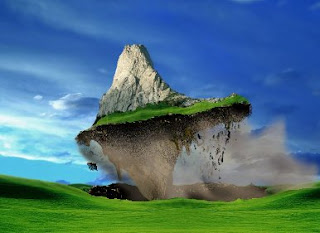Doggy Foggy, get off my lens!
Have you ever get mad of the sucking fog covering your lens/goggles? It's quite annoying anyway, esp. in the cold environments(cold water, cold weather) and when you're working hard!
The first time I faced this annoying doggy foggy was when I swam in the sea. I'd got tired of frequently getting up to clear the fog. After that, I went asking someone in the pool and I was introduced to a defogging solution. It worked well when swimming in the pool, but not in the sea! In the open sea, you have to be equipment-less for hours; so how can you get the sucking fog off?! When learning diving, I've learnt about a very natural way call "spitting"(yep! just spit into your goggles) as well as many home-made solutions like soaps, lotions,... all foamies.
But now, again these solutions(the foamy solutions in spec. and the way to solve the problem in general) turn useless in winter sports! Before, the environent is water, thus the wet inner surface is ok. But now in the air, except the really thin film of water, all other water forms on your lens do affect your visibility. So, tonight I decided to dig deeper into the theories and practices of anti-fog.
Bellowing is the phenomenons, causes and solutions for fogging:
A good reference is found at dirtbike.off-road.com.
The first time I faced this annoying doggy foggy was when I swam in the sea. I'd got tired of frequently getting up to clear the fog. After that, I went asking someone in the pool and I was introduced to a defogging solution. It worked well when swimming in the pool, but not in the sea! In the open sea, you have to be equipment-less for hours; so how can you get the sucking fog off?! When learning diving, I've learnt about a very natural way call "spitting"(yep! just spit into your goggles) as well as many home-made solutions like soaps, lotions,... all foamies.
But now, again these solutions(the foamy solutions in spec. and the way to solve the problem in general) turn useless in winter sports! Before, the environent is water, thus the wet inner surface is ok. But now in the air, except the really thin film of water, all other water forms on your lens do affect your visibility. So, tonight I decided to dig deeper into the theories and practices of anti-fog.
Bellowing is the phenomenons, causes and solutions for fogging:
- Water droplet formation & surface tension: The fog that sucks is really a thin layer of water droplets formed on the lens' surface. To disable this, we can apply such foamly solutions to reduce the surface tension between water and lens. You can realize how much droplet formation depends on surface tension by observing the real big dops of dew beading on taro leaves in the early morning, or drops of water on the waxed glass. These anti-water surfaces maximize surface tension of water.
- Water vapor condensation & temperature difference: From where the water comes for the droplets to form? Of course, from the water vapor in the air :) So, to reduce the condensation, there are goggles manufacturers producing double-layer lens to minimize the temperature difference. The mechanism is that the space between these 2 layers acts as a thermal insulator which keeps the inner layer has almost the same temperature with the air body (and water vapor) inside the goggle, thus water vapor get harder to condense.
- Water vapor source & perspiration, breath: From where the water vapor itself comes? Certainly from our body, esp. when we're working hard! Thus, to cut that vapor off we should cut off its source, eg. by wearing sweat-absorbing head bands and absorbent pad on the nose bridge, wearing masks that cover all your nose and mouth and let your breath goes down, and so on.
- The combination: Of course, it's best to combine all of these solutions together. There's a practice which has combinational effect is to allow air flows through your lens. But this can only be applied to "speedy" sports on the ground (or in the air), not to the water sports, and has tradeoffs of letting dust, air etc. to hurt your eyes. However, you can simply put the above practices all together: apply defog solutions to a double-layer goggle and wear sweat-absorbing clothes.
A good reference is found at dirtbike.off-road.com.








Nhận xét